
Understanding the Essence of South East Asian Hospitality Culture
When we think of Southeast Asia, a stream of familiar images quickly comes to mind: the graceful bow of the Thai Wai, Balinese women carrying offerings (Canang Sari) to their temples in traditional dress, the irresistible allure of Filipino Lechon and Lumpia and lively Karaoke sessions, or Vietnamese women in their elegant Ao Dai with wide-brimmed Nón lá hats. For many of us in the West, these are the postcard moments that define Southeast Asia, colorful, exotic, and often surface-level.
I’m Maria, and though I’ve called Europe home for nearly 35 years, my heart and roots remain deeply connected to Southeast Asia. With almost two decades of experience in the hospitality industry, I’ve had the privilege of blending the Eastern values of warmth, community, and genuine connection with the Western principles of service and professionalism. For me, hospitality goes beyond opening doors, it’s about creating meaningful connections that transcend cultural boundaries and redefine how we relate to one another.
In my work, I’m passionate about inspiring others to infuse their lives with Southeast Asia’s holistic approach to hospitality, where kindness, empathy, and well-being are at the core of every interaction.
Today, I invite you to step beyond the familiar stereotypes and discover how Southeast Asian hospitality transforms not just the visitor, but the host as well.
Whether it’s a shared meal, a spontaneous invitation to Karaoke, or the simple gesture of offering a pair of sandals to a stranger, this region’s approach to hospitality offers a unique lesson in humanity, rooted in their holistic way of life.
And that’s something that can change your journey, perhaps even your perspective, forever.

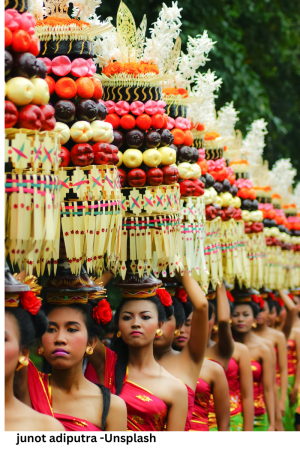
A Nostalgic Gift in a Thai Village
There’s something about Southeast Asia that stays with you long after you’ve left, the smell of incense in the air, the unexpected kindness from strangers, and yes, even the quirky moments that make you smile later. Maybe it’s the way people insist you eat, even after you’re full, or how a casual visit turns into a spontaneous Karaoke session. But beyond the experiences, it’s the feeling of connection that makes you long to return.
Years ago, while wandering through a small village in northern Thailand, I came across an elderly woman named Mae Noi. Her home was a modest bamboo hut with an open door, and despite her humble surroundings, her presence was full of warmth. I remember her sitting there, chewing on Betel leaves, the kind of leaves that stain your teeth black with years of use. When she smiled at me, her teeth revealed that deep stain, but it only added to her charm, a testament to a life lived in the simplicity of the countryside.
I had been traveling for weeks, and my shoes were on their last legs. The soles were worn through, and with every step, I could feel the rocks underfoot. Mae Noi noticed my state, and without a word, she waved me over. Inside her home, we didn’t exchange many words, our languages didn’t match, but her intentions were clear through her gestures and her persistent smile.
She disappeared into her home for a moment and returned holding a pair of sandals. They weren’t new or fancy, but they were sturdy and well cared for. I tried to refuse, feeling awkward about taking something from a woman who seemed to have so little, but she pressed the sandals into my hands, all while flashing that knowing smile.
As I slipped on the sandals, I couldn’t help but grin back. The fit was perfect, and the relief I felt was immediate. But more than that, it was the gesture itself that stayed with me, the quiet act of kindness that transcended words and cultural boundaries. Whenever I wore those sandals for the rest of my journey, I thought of Mae Noi and that smile, and blackened teeth.
That’s the thing about Southeast Asia. It’s not just the temples, the beaches, or the food that draws you back. It’s moments like this, those unexpected, simple acts of generosity that leave a mark on your heart. Years later, when I returned to Thailand, it wasn’t for the sights this time. It was for the feeling, the warmth of a smile, the connection with people who make you feel like family, even when you’re a stranger. That’s the magic of Southeast Asian hospitality. It pulls you back, again and again.

The Philippines: Pakikisama and Bayanihan (with a Touch of Karaoke)
In the Philippines, hospitality is more than just an expected social custom, it is a reflection of the country’s intricate and diverse cultural history. Colonized by Spain for over 300 years, the Philippines developed a blend of Eastern and Western influences, resulting in a unique form of hospitality that is a mosaic of different traditions, beliefs, and practices.
The Filipino way of welcoming guests is deeply rooted in concepts like Pakikisama and Bayanihan, but it is also shaped by the country’s colonial past, religious diversity, and deep connection to family and community.
Pakikisama:
Emphasizes maintaining smooth relationships and social harmony. This deeply ingrained value encourages Filipinos to get along with others by putting the group’s needs before their own, fostering unity. When you are a guest in a Filipino home, you’ll feel this Pakikisama in the way Filipinos will bend over backward to ensure you are comfortable, well-fed, and entertained. Refusing an invitation is often unheard of, and hosts will insist that you stay longer, eat more, or join in for some Karaoke. The idea is simple: making guests feel like part of the family is paramount, even if it means putting personal convenience aside.
Bayanihan:
traditionally illustrated by an image of villagers physically moving a house together, is another important cultural concept that reflects the communal spirit of Filipinos. Bayanihan embodies collective effort, unity, and selflessness. In practice, it means that no one is left behind, when someone needs help, the entire community comes together to assist. This extends to hospitality, where guests are not just the responsibility of the host but of the entire community.
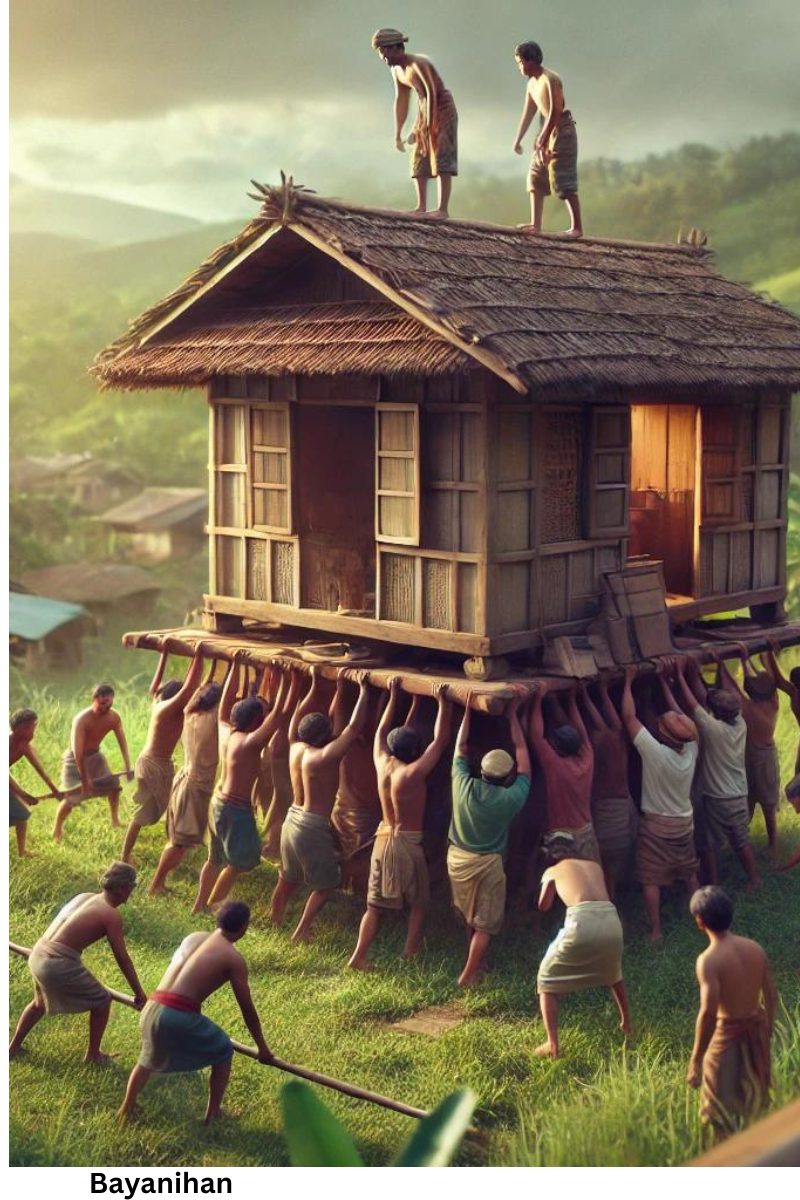
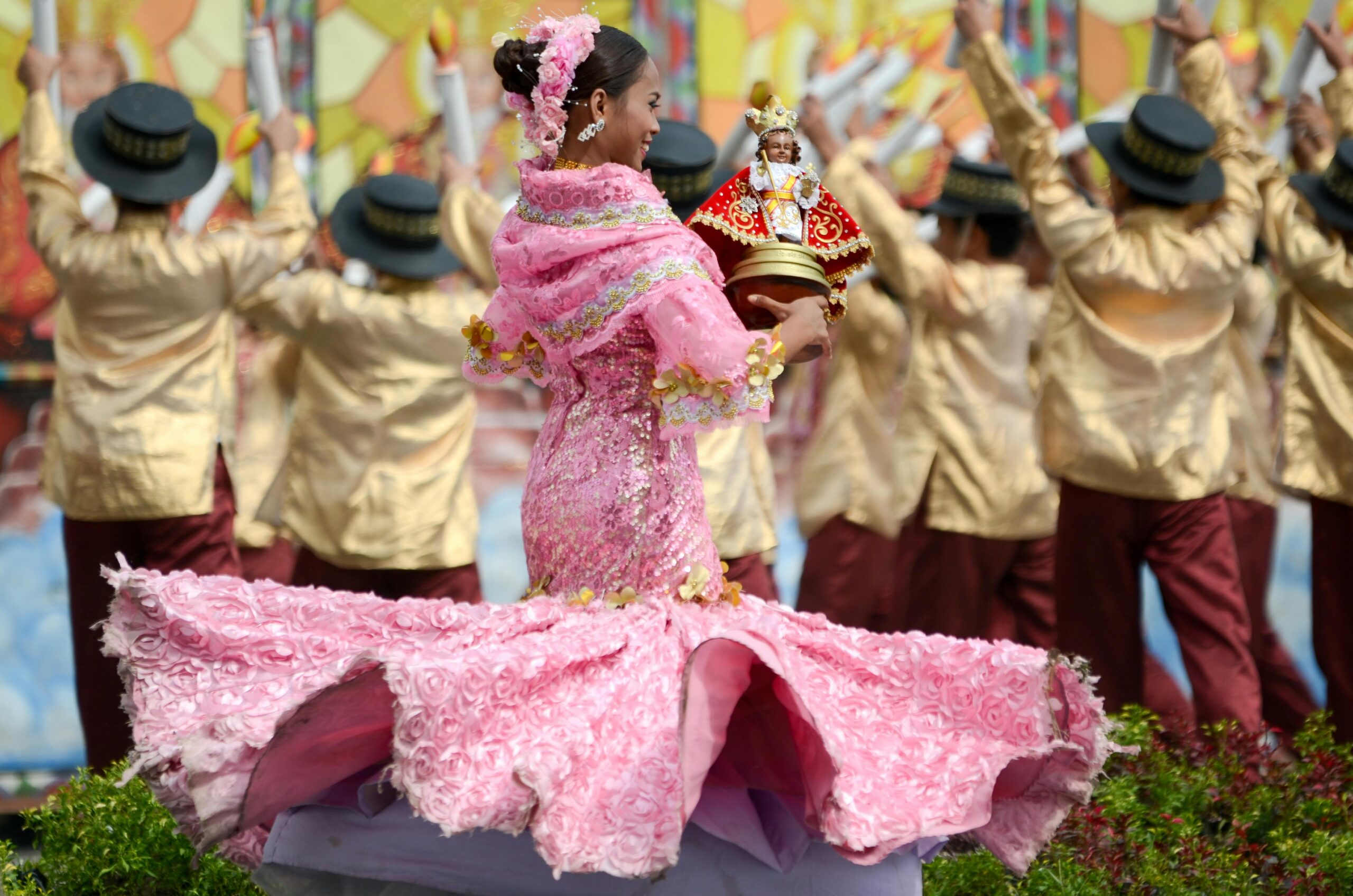
Thailand: Nam Jai and Sanuk
In Thailand, hospitality is guided by two equally important principles: Nam Jai and Sanuk. These concepts go beyond mere pleasantries, they are the pillars of how Thais view their relationships with others, especially guests. Thai hospitality is not transactional; it is a reflection of the deep-rooted cultural values of kindness, joy, and social harmony.
Thailand’s history plays a significant role in shaping its culture of hospitality. Unlike many of its neighbours, Thailand has the distinction of being the only Southeast Asian country never colonized by a Western power. This independence allowed Thailand to preserve its traditions, values, and identity without external interference, including the deeply embedded values of Nam Jai and Sanuk. This cultural continuity has helped maintain a strong sense of national pride and a commitment to harmonious social interactions that permeate every aspect of life, including hospitality.
Nam Jai:
Which translates to “water from the heart”, and is a profound expression of generosity and selflessness. It reflects a sincere desire to help others, not because it’s expected, but because it comes from a place of genuine care. This concept is deeply intertwined with Buddhist principles of compassion and loving-kindness, which are central to Thai life. When you’re welcomed into a Thai home, you can feel the warmth of Nam Jai in every gesture, from the carefully prepared meals to the constant attentiveness to your comfort. It’s a hospitality that flows naturally, like water, with no expectation of anything in return.
Sanuk
On the other hand, emphasizes the importance of finding joy and pleasure in everything you do. This philosophy shapes how the Thais approach their hospitality. The thais want to ensure that not only are their guests comfortable, but that they are also having a great time. For Thais, Sanuk is about creating a lighthearted, enjoyable atmosphere where everyone can feel relaxed and happy. Whether it’s a family gathering, a social event, or even casual interactions, Sanuk ensures that hospitality is not just about formalities but also about fun, laughter, and connection.
Together, Nam Jai and Sanuk create a unique form of hospitality that is both heartfelt and uplifting, offering guests not just comfort but a genuine sense of belonging. This balance of generosity and joy reflects Thailand’s enduring commitment to social harmony and its ability to preserve its cultural identity in an ever-changing world. It’s this spirit of unwavering kindness and lightheartedness that makes Thai hospitality so memorable and cherished by those who experience it.
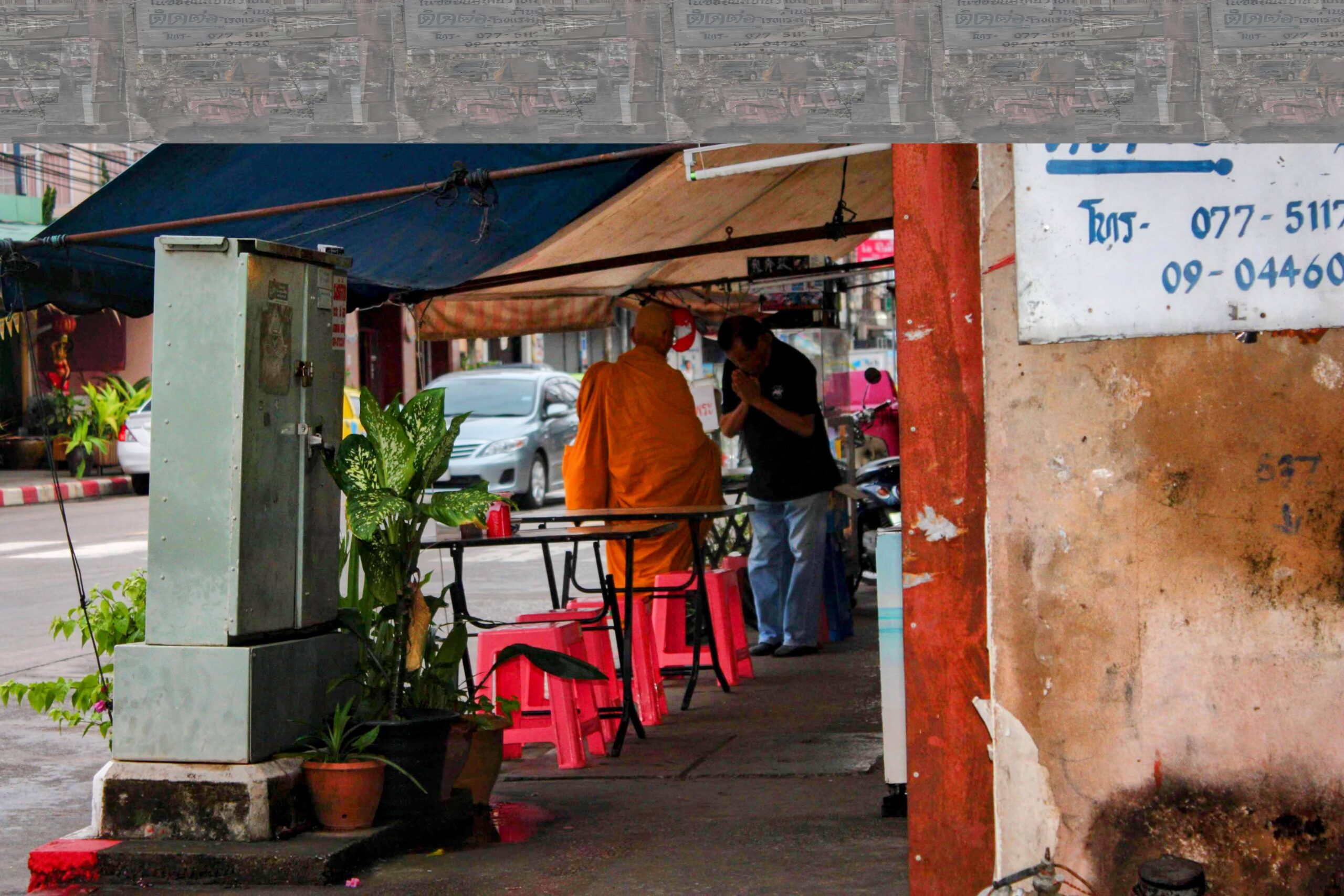
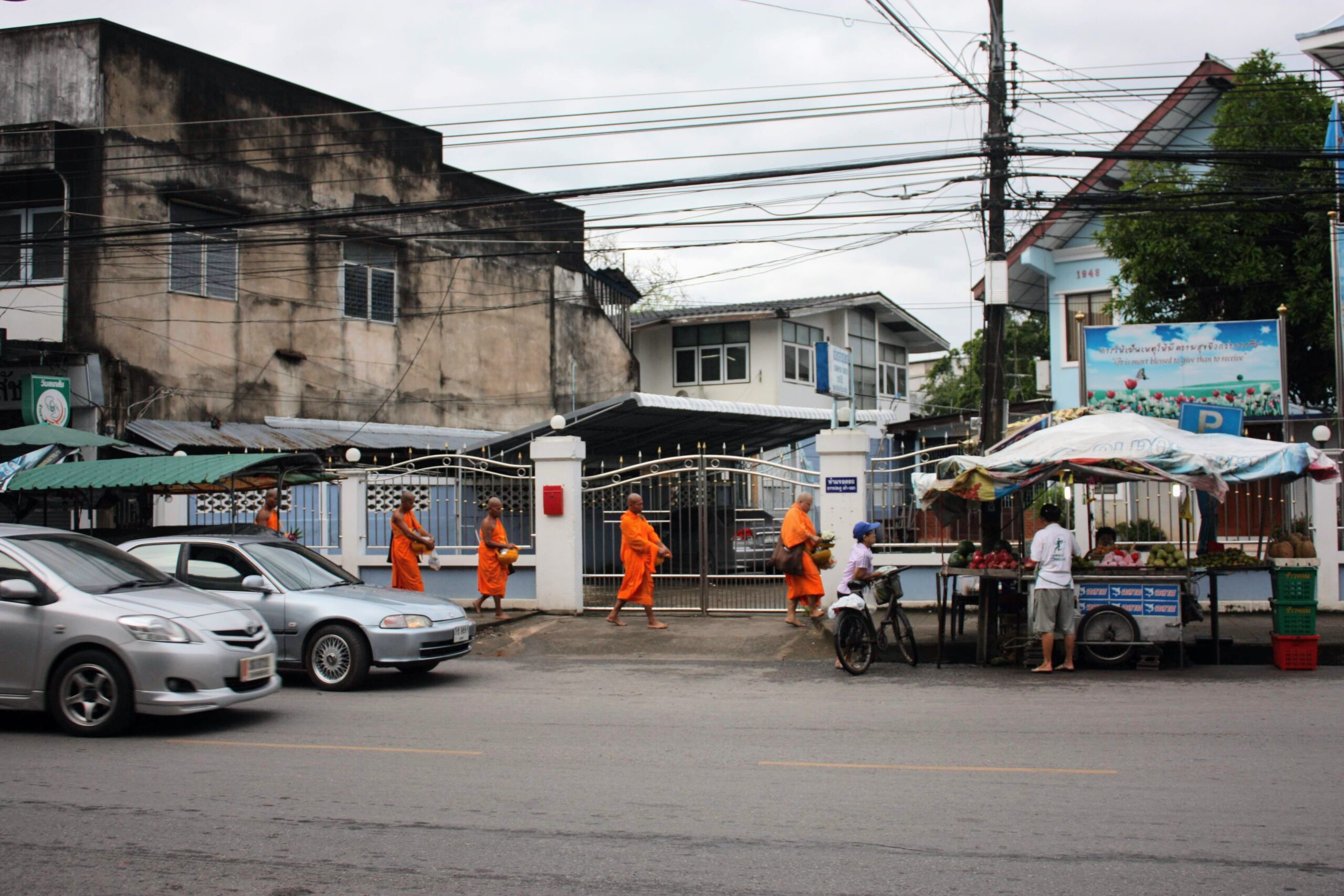
Indonesia: Gotong Royong and Ramé
Indonesia, a vast archipelago with more than 17,000 islands and hundreds of distinct ethnic groups, has a rich cultural diversity that shapes its approach to hospitality. Two key concepts, Gotong Royong and Ramé, reflect the spirit of togetherness and the vibrant social atmosphere that characterizes Indonesian life.
Gotong Royong
meaning mutual cooperation, is a deeply embedded cultural value across Indonesia. This sense of collective responsibility naturally extends to hospitality, where helping one another is essential. Whether it’s preparing for a wedding or hosting a guest, the entire community often comes together to share the responsibilities, food, and even resources. Gotong Royong isn’t just an ideal; it’s a lived experience that strengthens social bonds through collaboration and mutual support.
Ramé
on the other hand, captures the liveliness and energy that permeates Indonesian gatherings. More than just a noisy or bustling environment, Ramé refers to a lively atmosphere where joy, interaction, and a sense of community thrive. It’s the heartbeat of social gatherings, where guests are not just welcomed but invited into a lively space filled with laughter, music, and vibrant conversation.
To understand Ramé, imagine attending a traditional Indonesian wedding. The event is not merely a formal ceremony, but a day-long celebration filled with dance, music, and food. The venue is crowded with relatives, friends, neighbors, and even strangers who have been invited to join in the festivities. People are chatting loudly, children are running around, and traditional music is playing in the background. Amidst all the noise and excitement, there is a feeling of inclusivity, no matter who you are, you are part of the joyful experience. This is Ramé: the warmth and liveliness that turn any event into a memorable occasion, driven by the collective energy of the community.
Indonesian hospitality, through the lens of Gotong Royong and Ramé, is a communal effort to ensure that guests feel embraced by the social fabric of the community. Whether you’re attending a bustling village festival or a smaller family gathering, the spirit of Ramé ensures that you’re welcomed into a vibrant and dynamic space, full of life, warmth, and connection.
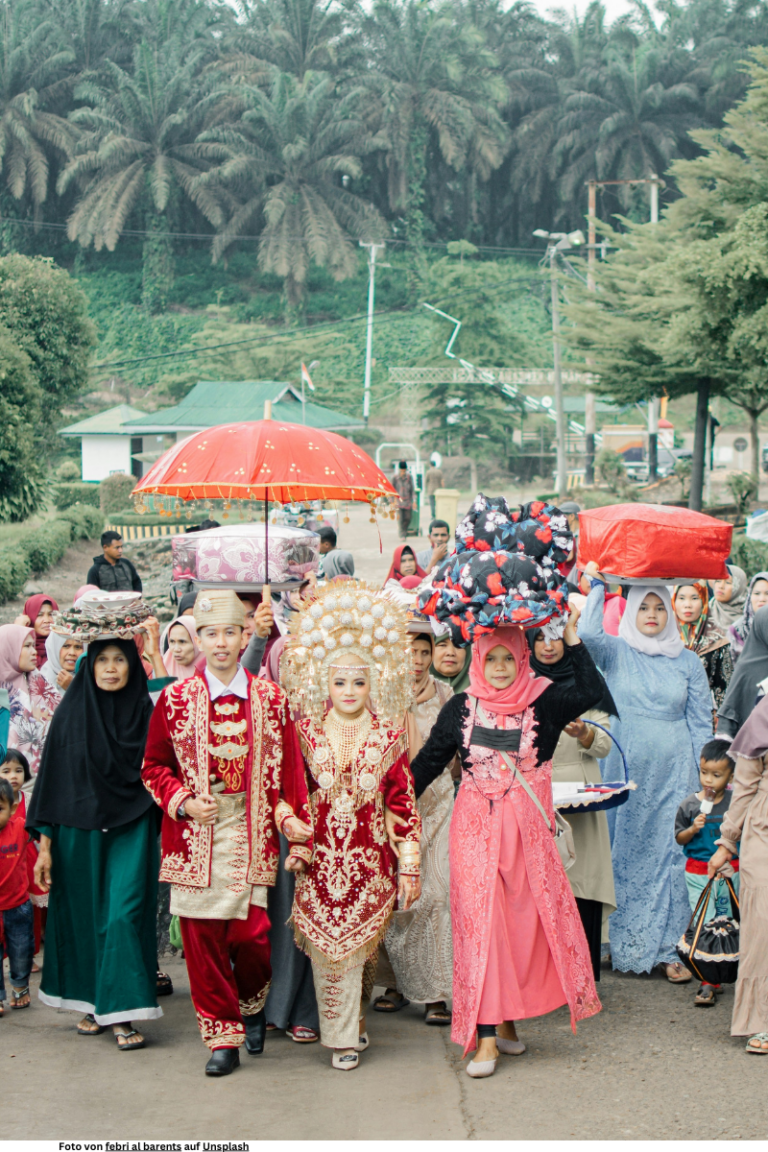
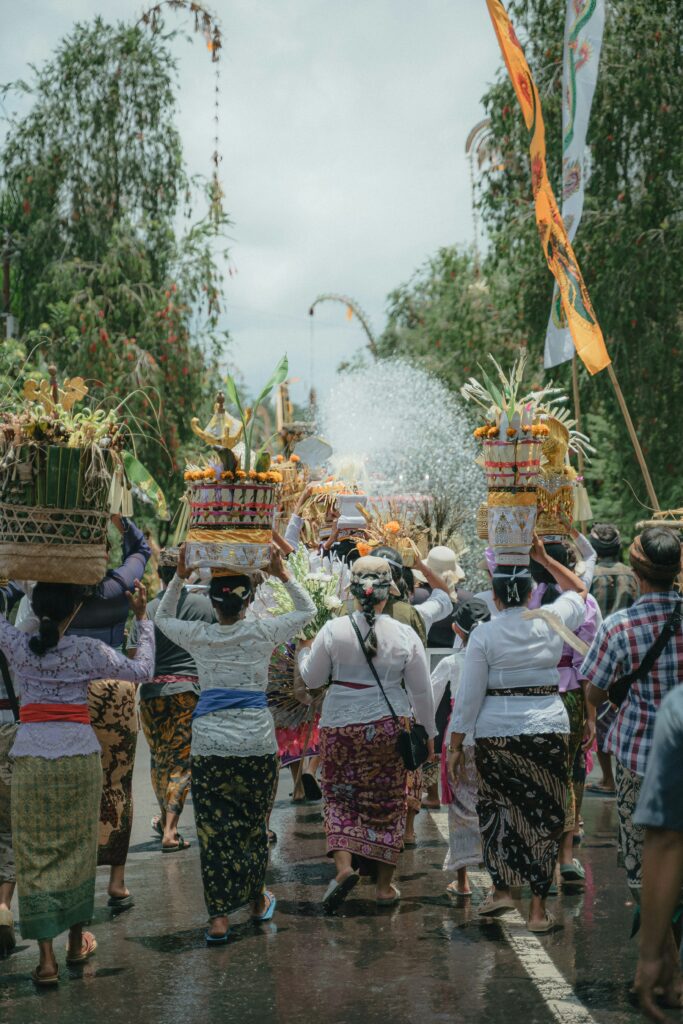
Vietnam: Hiếu Khách and Lễ Nghĩa
Vietnamese hospitality is deeply tied to the values of respect, honor, and community, all of which are rooted in centuries of tradition. Despite being influenced by Confucianism, Buddhism, and more modern Western cultures, the core of Vietnamese hospitality remains unchanged: guests are to be treated with utmost respect and care. The two guiding principles of Hiếu Khách and Lễ Nghĩa form the backbone of how Vietnamese hosts interact with their visitors.
Hiếu Khách
which directly translates to hospitality, is more than just a word, it represents the inherent responsibility of the host to ensure their guest’s well-being. In Vietnamese culture, a guest’s comfort is paramount, and no detail is overlooked. Whether it’s offering tea upon arrival, preparing an elaborate meal, or ensuring a peaceful environment, Vietnamese hosts will go above and beyond to make their guests feel special. But this hospitality isn’t reserved for just family or close friends. Even strangers are met with warmth and generosity, a reflection of the deep-rooted belief that every guest is an extension of the family.
Lễ Nghĩa
involves proper etiquette and manners, which are incredibly important in Vietnamese society. Respect for elders, guests, and authority figures is ingrained in social customs and influences every aspect of hospitality. This respect is often demonstrated through the serving of food, with the best portions of a meal always offered to the guest first, a gesture of honor and humility. Meals in Vietnam are central to hospitality, and sharing food is considered a way to build deeper bonds. Often, the most humble of homes will present a meal that far exceeds the resources of the household, demonstrating the significance of treating guests with dignity.
Moreover, Vietnam’s historical and cultural context gives depth to its hospitality. The country’s long history of struggle, whether through wars, colonialism, or economic hardship, has forged a resilient and empathetic spirit among its people. This spirit manifests in how they treat others, welcoming them into their homes with an earnest desire to make them feel at ease, despite the challenges they may face.
Hospitality in Vietnam is not merely an obligation; it’s a proud tradition passed down through generations. Whether you are sitting on a plastic stool in a bustling street café, sipping pho in a family home, or partaking in a grand celebration, you will experience a sense of welcome that is sincere, respectful, and unforgettable.
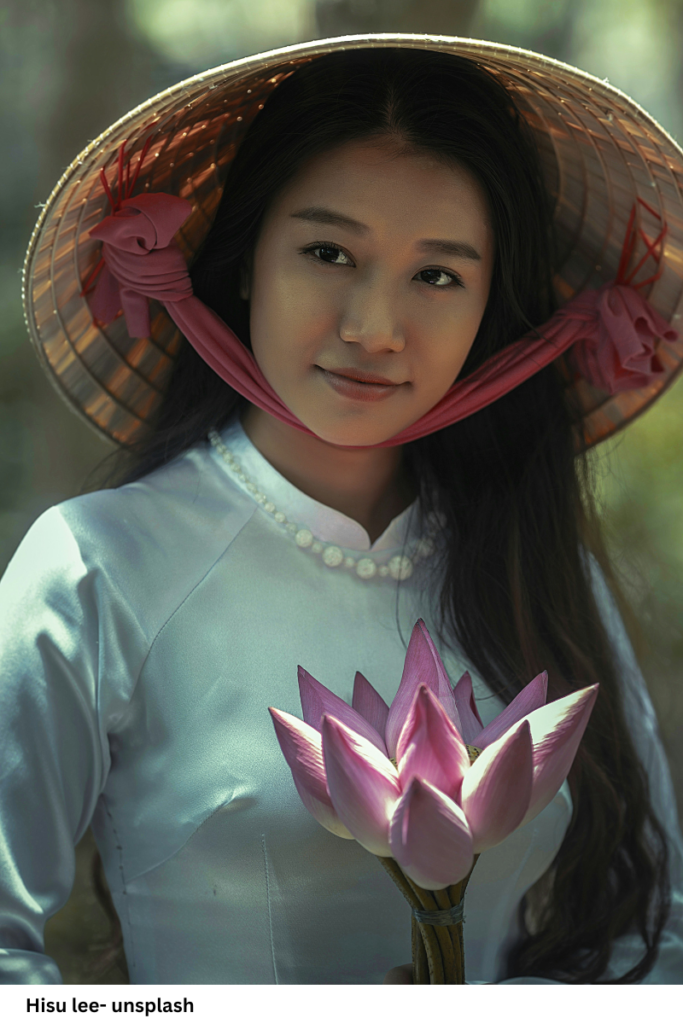
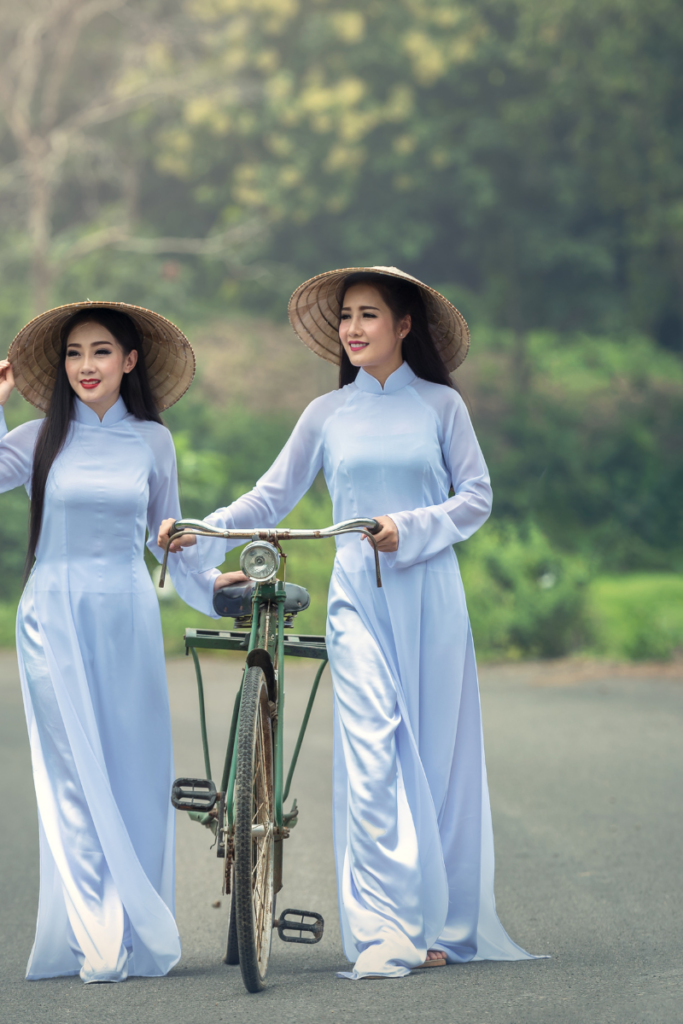
.
Conclusion: A Holistic Approach to Hospitality
As I reflect on my journey, two German words capture my feelings perfectly: Sehnsucht and Fernweh.
Sehnsucht represents a deep, almost nostalgic yearning for something far away, often unattainable, like the warmth and hospitality of Southeast Asia that I carry with me no matter where I am.
Fernweh, on the other hand, is a longing to explore distant places, a kind of ‘homesickness for places I’ve never been.’ These emotions guide me as I reconnect with my roots in Southeast Asia, drawn by the hospitality and cultural richness of the region. Southeast Asia feels like home, but there’s always that part of me that wants to wander and discover more. It’s this mix of longing and exploration that makes every journey special, seeking both comfort and new experiences wherever I go.
Southeast Asian hospitality is a living expression of centuries-old traditions, deeply rooted in values of community, respect, and spiritual well-being. From the joyful vibrancy of Indonesia’s Ramé, to the heart-centered generosity of Thailand’s Nam Jai, and the communal spirit of the Philippines’ Bayanihan, hospitality across this region transcends simple acts of kindness, it reflects a way of life.
These examples represent only a glimpse of the rich and diverse hospitality traditions found in Southeast Asia. Countries like Cambodia, Laos, Myanmar, Malaysia, Singapore, and many others offer their own unique interpretations of welcoming guests, shaped by their distinct histories, cultures, and values. Each nation carries its own stories of warmth and connection, all contributing to the vibrant mosaic that is Southeast Asia.
As we look to the future, our next exploration will take us further East, to the fascinating lands of Japan, China, and beyond. There, we will uncover how hospitality manifests in these deeply traditional yet modern societies, where ancient customs meet contemporary living in ways that continue to captivate travelers from all around the world.
Whether you find yourself receiving a quiet smile from a villager in Thailand, joining a spirited gathering in Indonesia, or experiencing the heartfelt welcome of the Philippines, Southeast Asia’s hospitality offers an invitation not just to visit but to belong. And as we continue our journey through Asia, we will discover that hospitality, no matter where it originates, holds the power to transform our experiences, our perspectives, and ultimately, our connections with one another.
Call to Action
Are you looking to bring some of Southeast Asia’s holistic approach to hospitality into your own life or business? Let’s connect! Explore my coaching services and learn how we can work together to create environments that inspire connection, well-being, and joy.
